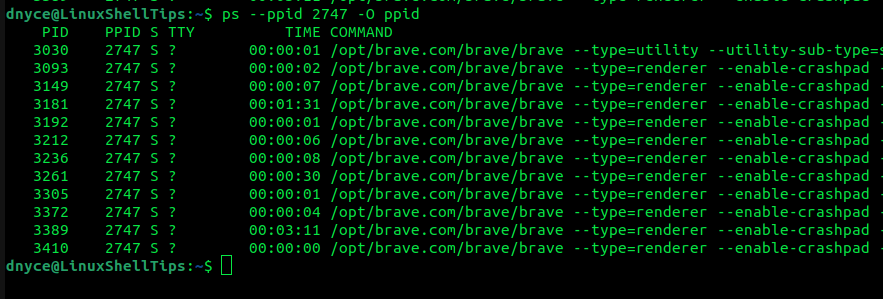A Linux operating system provides the perfect environmental exposure for users to understand the Ins and Outs of process management. The simplest definition of a process is any program in execution (running).
For instance, the web browser you are using to read this article piece only becomes a process once that web browser is up and running. Before your web browser was installed and launched, it only existed as a program (a process in waiting).
When you dive deeper into the concept of process management, you will get to acknowledge the various properties associated with processes. This article will walk us through differentiating three processes’ properties namely: PID, TID, and PPID.
Background Information on Process Management
In order to distinctively understand and differentiate the processes mentioned above’ properties, we need to understand process management from a parallel computing perspective.
In parallel computing, allocated and purpose-driven resources such as file descriptors and memory space qualify as a valid definition of a process.
Most minor instructions set associated with and manipulated by processes are called threads. A scheduler handles these threads.
- Multithreading and multiprocessing are parallel computing concepts since these programming techniques support the simultaneous performance of multiple operations.
- Under multithreading, a scheduler assigns different tasks to multiple threads associated with a single process. The memory resources allocated to this single process are therefore shared among multiple threads present.
- Under multiprocessing, a single parent process is associated with multiple child processes. Here, process communication is not as efficient as thread communication when sharing resources hence the need for explicit declaration.
Defining PID, TID, and PPID
By default, these three highlighted process properties are identifiers. Let us define them one by one.
- PID (Process Identifier) – Every running process accounted for by the system kernel is identified by a unique number called the process identifier. The systemd is associated with PID 1.
- TID (Thread Identifier) – This number (integer) uniquely identifies threads associated with a process or processes. When there is only one thread; like in the case of serial programming, TID and PID become indistinguishable. TID is only different from PID in multi-thread environments since each thread is assigned a unique TID. Also, note that threads attached to the same process share the PID.
- PPID (Parent Process Identifier) – When a multiprocessing sequence is triggered by a program, a parent process comes into existence which then (the parent process) consequently initiates/facilitates the creation of numerous child processes. PPID uniquely identifies the parent process. The child processes share the PPID but will have different and unique PIDs. PPID helps link child processes to their associated parent process.
Getting a Known Process PID in Linux
The command pidof helps us identify the PID associated with a named process. For instance, we can query the PID associated with a running Brave web browser.
$ pidof brave

The output implies that this process is associated with numerous PIDs.
Getting a Known PID’s TIDs
There are two approaches to achieving this objective:
1. Querying /proc/PID/task File
Let us take a PID from the execution of the above pidof command.
$ ls /proc/3410/task

The /proc/… directory accounts for each running process based on its PID and the …/task directory accounts for the TIDs associated with each PID. As you might have noted, the TID value will either be equal to/greater than the PID value.
2. Using ps Command
Here, we use the ps command together with the --pid and tid flags.
$ ps --pid 3410 -O tid,lwp,nlwp -L

LWP denotes Light Weight Process and NLWP counts them.
Getting a Known TID’s PID
The first approach is to query the /proc/… directory using the readlink command. You have to specify the TID number in the command.
$ readlink -f /proc/*/task/4346 | cut -d/ -f3

Alternatively, the ps command should also work. We however need to pipe its query to an awk command for it to print to the standard output the queried info.
$ ps -e -O tid -L | awk '$2 == 4346'

Getting a Known PID’s PPID
We can reference the /proc/PID/status directory using the cat command and then pipe the results to the grep command which then retrieves the PID’s PPID.
$ cat /proc/3389/status | grep PPid
The ps command can also retrieve a PID’s PPID where the -O flag redirects the retrieved PPID as output.
$ ps --pid 3389 -O ppid

Getting a Known PPID’s PIDs
Here, we use the ps command with the -O flag which makes it possible to print out the PID and PPID columns side by side.
$ ps --ppid 2747 -O ppid

In this article, we have differentiated PID, TID, and PPID identifiers and also shown various command-line approaches to retrieving their respective values. Hope you enjoyed the article and feel free to leave a comment or feedback.
